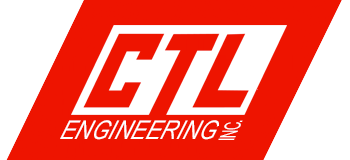ENVIRONMENTAL SITE ASSESSMENTS
PHASE I AND PHASE II ENVIRONMENTAL SITE ASSESSMENT EXPERTISE
When it comes to buying or owning property, knowledge is power. Understanding what you are purchasing is critical information to help prospective property owners reduce risks.
To avoid the risk of environmental liability, commercial or industrial property buyers must conduct due diligence studies.CTL Engineering works directly with lenders, developers, private and public entities, and other prospective buyers to perform a range of environmental assessment services, including:
- Phase I Environmental Site Assessment (Phase 1 ESA)
- Phase II Environmental Site Assessment (Phase 2 ESA)
- Hazardous Material Survey & Abatement (including Asbestos and Lead)
- Ecological / Wetland Assessments
In each of these services, CTL evaluates risks, particularly as they relate to the client’s goals for the property. If needed, CTL also works with the client to identify cost-effective solutions.
Over the past three decades, CTL has conducted over 12,000 Phase I Assessments,resultingin resolvedliabilities stretching into the millions of dollars.
PHASE I ENVIRONMENTAL SITE ASSESSMENT
The first step to evaluating environmental risks for a property owner, is typically a Phase I ESA.
A Phase I ESA can take several forms including:
- Phase I ESA Property Condition Assessments
- Small Business Administration (SBA) Due Diligence Support
- Red-Flag/ Desktop Assessments
- Continuing Care Obligations and Long-Term Stewardship Management
- Energy and Sustainability Evaluations
How does it work?
While each Phase I ESA is unique, qualified Environmental Professionals or EPs will combine historical research with a site visit to create a report. CTL EPs are looking for previous businesses or uses that might have caused adverse environmental impacts.
Historical research evaluates the likelihood of environmental impact from past operation, either on the site or a surrounding property. It usually includes:
- Interviewing key personnel
- Reviewing aerial photos, city directories, fire insurance maps and historical topographic maps.
- Reviewing local, state and federal environmental records
Actual sampling of soil, air, groundwater or building materials is typically not part of Phase I.
Ultimately a Phase I ESA report will provide the client with history andCTL’s opinion of the likelihood of Recognized Environmental Conditions (RECs), and business environmental risks (BERs).This information allows the client to evaluate potential risks and make informed decisions.
Why do buyers need it?
Federal regulations do not require a Phase I ESA on every commercial real estate transaction. However, a Phase I ESA, in conjunction with Phase II ESA and remediation (where necessary), are intended to permit property owners to satisfy one of the requirements to qualify for the “innocent landowner, contiguous property owner, or bona fide prospective purchaser” limitations on the(Comprehensive Environmental Response, Compensation and Liability Act) (CERCLA).
Essentially, the “innocent landowner” defense limits the property owner from being held liable for cleanup costs if environmental hazards are found at a later date.
Buyers who neglect to have Phase I ESA performed could be liable for the clean-up costs of environmental hazards found in the soil, soil gas or groundwater. Clean-up obligations can cost hundreds of thousands, if not millions, of dollars.
By hiring CTL to complete the Phase I ESA according to the provisions established under All Appropriate Inquiries (AAI) rules, buyers can be assured they are conducting the due diligence needed to protect themselves from future liability.
PHASE II ENVIRONMENTAL SITE ASSESSMENT
If a Phase I ESA determines the likely existence of any recognized environmental conditions (RECs), a Phase II ESA is typically recommended.
During the second phase, environmental professionalsdetermine if soil, soil gas and/or groundwater on or below the property have been impacted bychemicals of concern.
CTL works together with the client to develop a cost-effective plan to testsoil, soil gas and groundwater and examines existing information to evaluate risks.
Phase II Environmental Site Assessments (Phase 2 ESA) may include:
- Soil and Groundwater Investigations
- Vapor Intrusion Screening, Assessment and Mitigation
- Geophysical Surveys for Subsurface Imaging
- Leaking Underground Storage Tank (LUST) Investigations and Remediation
- Brownfield Assessment, Comfort/Site Status Letters and Redevelopment
- Remedial Investigations and Feasibility Studies
- Remedial Alternative Evaluations
- Hazardous Waste Site Assessments and Remediation
- Risk-based Site Assessment and Closure Activities
- Waste Characterization and Management
- Groundwater Assessments and Monitoring
- Pond/Lagoon Investigation and Closure
- Vapor Intrusion Investigations and Mitigation
- Resource Conservation Recovery Act (RCRA) Assessment and Closure Plans
- Comprehensive Environmental Response Compensation and Liability Act (CERCLA) Assessments and Closure Plans
This data helps Inform prospective or current property owners of how to manage, control, or remediate environmental contamination, and take reasonable steps to ensure human health and liability protection.
COMPLETE ENVIRONMENTAL SITE ASSESSMENTS WITH JUST ONE CONSULTANT
With 175 years of combined experience, CTL Environmental Professionals have performed over 12,000 Phase I and Phase II Assessments for clients ranging in size from individual land owners to large multi-national corporations.
In addition to Phase I and Phase II ESA assessments, CTL can also conduct wetland, stormwater , and hazardous material assessments , often simultaneously. With multiple office locations and a knowledgeable staff of geologists, environmental scientists/engineers, wetland scientists/ecologists, and certified HazMat Professionals, CTL offers a range of services designed to investigate a commercial property or industrial site thoroughly and ensure the viability of its future use.
Contact our experts today for further Information.
Related Blogs
Why you need an ESA consultant you can trust
Who needs an environmental site assessment? And who doesn’t?
ASK OUR EXPERTS
Kevin Reichert
Location: Wapakoneta
Direct Dial: +1 419-738-1447
Chris Jaros
Location: Indianapolis
Direct Dial: +1 317-295-8650




